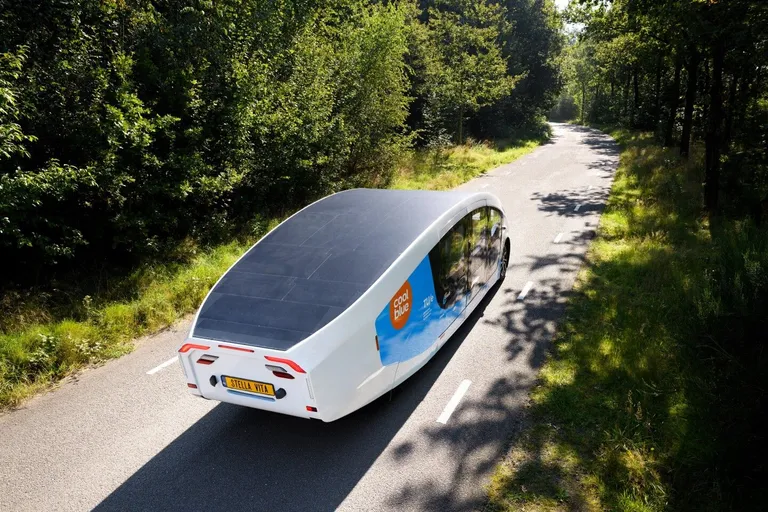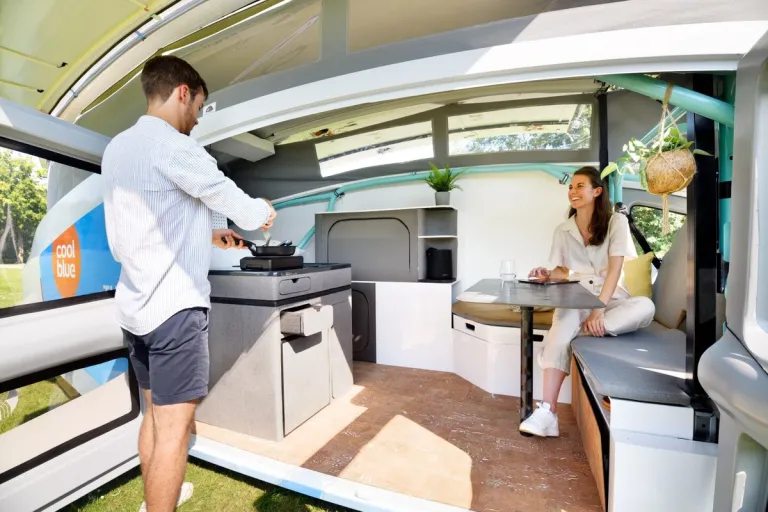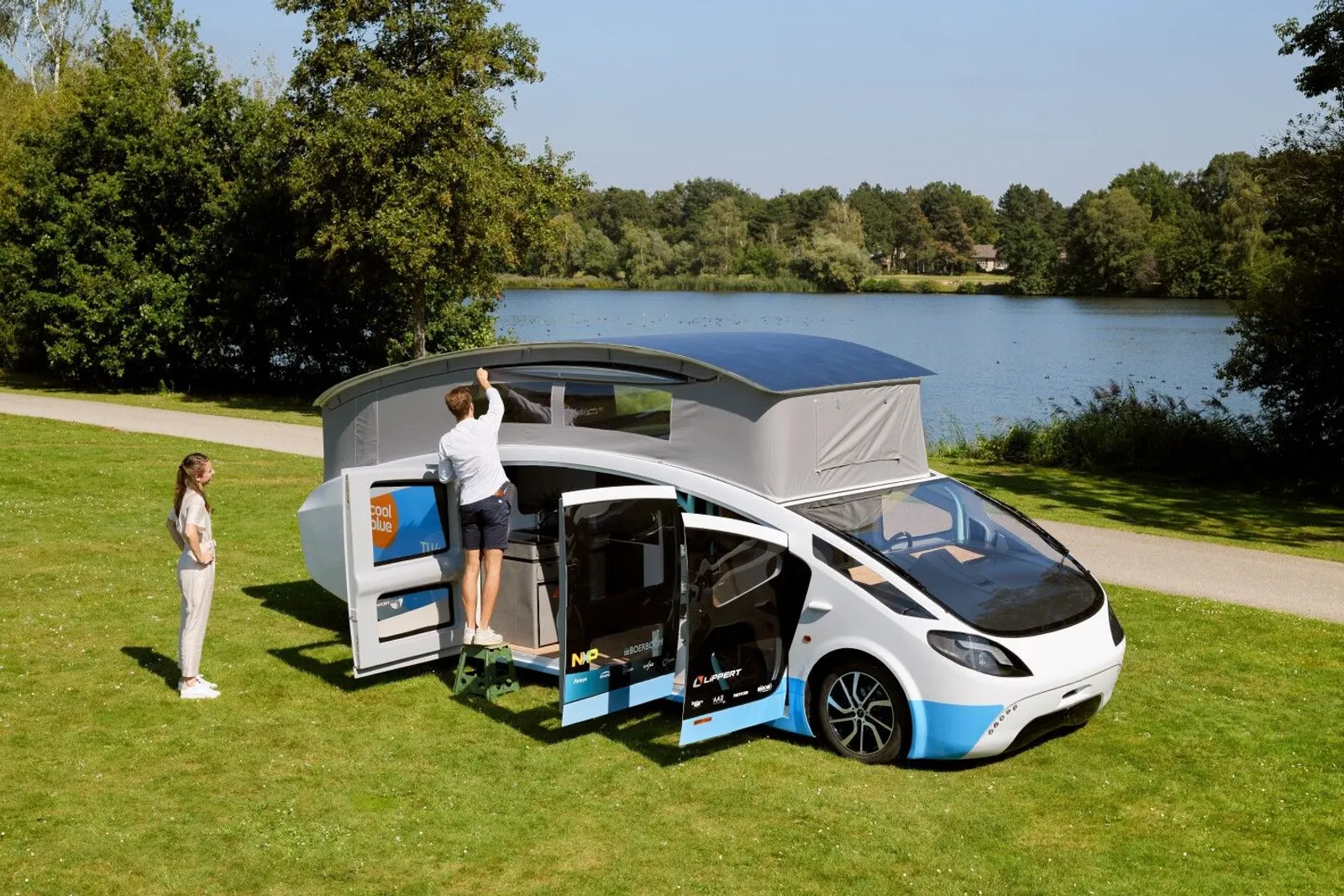Stella Vita, which means star of life, is a Self-sustaining EV House on Wheels (SHOW) that was designed and built by 22 students at the Eindhoven University of Technology in the Netherlands. The students pointed out that in a single hour, the amount of power from the sun that strikes the Earth is more than the world consumes in a year. Impressively, the RV has just driven almost 2000 kilometres around Europe, without needing fuel or plugging in to charge-up.
The SHOW RV has solar panels on its roof and awnings and is solely powered by solar energy. Panel area is 17.5 square metres with the panels unfolded and 8.8 square metres when driving. Driving range, with a full charge from the 60 kWh lithium-ion battery pack, is said to be 730 km in sunny conditions and 600 km when cloudy.
The futuristic RV is equipped with living essentials including a double bed, sofa, kitchen and bathroom (complete with a shower, sink and toilet). It can accommodate two people who can drive, cook and watch TV using just the vehicle’s solar-charged battery, according to its creators. SHOW was designed and built to be super-efficient and to generate more energy than it consumes while driving. A key to that is good aerodynamics, which reduce drag and provide better efficiency.

The ideal shape for least air resistance is a droplet: a rounded front end with a streamlined roof and a rear end with as little surface area as possible. The droplet shape is clearly visible in the design of Stella Vita.
Transporting mass takes a lot of energy, which is why SHOW is as light as possible, tipping the scales at 1700 kg. Everything is designed with weight-saving in mind, including an aluminium frame and composite aluminium-foam body shell. All parts in SHOW have been optimised to be strong enough, but light.

To avoid wasting energy, it is important to have a good understanding of energy consumption and the infotainment system indicates how much electricity the appliances consume and what can be done with the remaining power in the battery. Owners can then decide whether to spend the energy on camp life or driving.

In order to provide the necessary space for sleeping, cooking and eating, the vehicle has a novel lifting roof, which is lowered for travel. However, when stationary and charging, the complete roof is raised and additional solar panels slide-out from the sides, doubling as awnings.

Large windows are said to give the feeling of being outdoors, while interior colours are chosen to match those in nature. The living space is arranged in such a way that you can cook inside or outside. Additionally, lightweight furniture is easy to move outside, making the transition from indoor to outdoor living easy. Whilst not intended for production the SHOW concept points to a practical future for solar-powered RVs that will revolutionise the way holidaymakers of the future travel.

